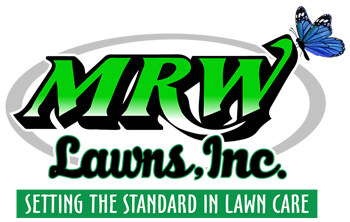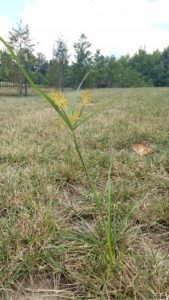Nutsedge: The Superweed
The best way to describe nutsedge is “superweed.” Unlike other broadleaf weeds, this sedge has a robust root system made of nut-like tubers called nutlets. The nutlet stores a high amount of energy for the nutsedge to use in its lifecycle. With their grass-like leaves, sedges can be difficult to distinguish within the lawn at the beginning of the growing season. In the hot, humid, sunny days of summer, however, it grows faster than most grasses and even begins to flower. It is easy to distinguish only a few days after mowing by the lighter green leaves shooting up quicker and taller than the grass surrounding it.
Because of its reliance on heat and light, nutsedge does not do well in shady areas. Nutsedge thrives particularly well in wet soil and will invade areas where it didn’t grow in the past because of the amount of moisture retained in the soil. Increased soil moisture could be from poor drainage, too much rain or irrigation, or even water run-off from a leaking hose. If any of these things can be modified, that might help. Otherwise, a fall aeration may be necessary to relieve soil compaction, which will aid in better overall drainage.
How to Treat It
In the lawn and landscape industry, nutsedge continues to be an issue we tackle head-on. Unlike annual grassy weeds like crabgrass, we have no pre-emergent herbicides that allow us to treat the sedge before it sprouts. Instead, we can only treat nutsedge post-emergently while we can see it. Because of the stored energy in the “superweed” nutlets, it is not uncommon for nutsedge to recover after we treat it and reappear after only a couple of weeks. Even hand-pulling is only partially effective unless you remove the entire root system.
It often takes several herbicide applications entirely control this tenacious weed until it dies off in the cooler fall temperatures. Even then, there still might be enough stored energy in the roots for it to return the next year. While we are happy to treat the nutsedge when we find it in the yard, or when we receive a service request, there may be circumstances where further treatment is no longer advisable. If herbicide could burn the lawn due to heat or drought, we recommend postponing chemical treatment to prevent damage.
For your reference, consider reviewing the links below for additional information:
https://hgic.clemson.edu/factsheet/nutsedge/
https://www.domyown.com/nutsedge-identification-guide-a-561.html


